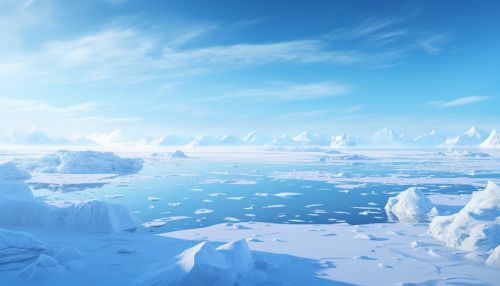The Science of Earths Cryosphere and Climate Interactions
Introduction
The cryosphere refers to the frozen water part of the Earth system. One of the key components of the Earth's cryosphere is ice, which plays a significant role in the Earth's climate interactions. This article will delve into the science of Earth's cryosphere and its interactions with climate, providing a comprehensive and detailed understanding of the subject.


Components of the Cryosphere
The cryosphere consists of several components, each with unique characteristics and roles in climate interactions. These include glaciers, ice sheets, sea ice, snow, permafrost, and icebergs.
Glaciers
Glaciers are large masses of ice that form on land where the accumulation of snow exceeds its ablation over many years. They play a crucial role in the Earth's climate system by reflecting solar radiation back into space, thus helping to regulate the planet's temperature.
Ice Sheets
Ice sheets are enormous masses of glacial land ice extending more than 50,000 square kilometers. The two ice sheets on Earth today cover most of Greenland and Antarctica. These ice sheets interact with the climate by influencing sea level, atmospheric and oceanic circulation, and global temperature.
Sea Ice
Sea ice forms from the freezing of ocean water. It covers vast areas of the polar oceans and plays a significant role in the Earth's energy balance by reflecting sunlight back into space.
Snow
Snow is precipitation in the form of ice crystals. It plays a vital role in the Earth's climate system by providing an insulating layer over the land and ice surfaces, reflecting sunlight, and influencing atmospheric and hydrological processes.
Permafrost
Permafrost is permanently frozen ground that occurs in high latitudes and altitudes. It plays a critical role in the Earth's climate system by storing large amounts of carbon, which can be released into the atmosphere as greenhouse gases when permafrost thaws.
Icebergs
Icebergs are large pieces of freshwater ice that have broken off from a snow-formed glacier or ice shelf and are floating in open water. They play a role in the Earth's climate system by influencing oceanic circulation and sea level.
Cryosphere and Climate Interactions
The cryosphere interacts with the climate system in several ways, influencing atmospheric, oceanic, and terrestrial processes.
Cryosphere and Atmospheric Interactions
The cryosphere influences the atmosphere primarily through the albedo effect, where ice and snow reflect solar radiation back into space, helping to regulate the Earth's temperature. Changes in the cryosphere, such as melting ice and snow, can reduce the albedo effect, leading to increased absorption of solar radiation and global warming.
Cryosphere and Oceanic Interactions
The cryosphere interacts with the oceans in several ways. Melting glaciers and ice sheets contribute to sea-level rise. Sea ice influences oceanic circulation by affecting the salinity and temperature of the surface waters. Icebergs also play a role in oceanic circulation by releasing freshwater as they melt.
Cryosphere and Terrestrial Interactions
On land, the cryosphere influences hydrological processes and ecosystems. Snow provides an insulating layer over the land and ice surfaces, affecting soil temperatures and plant growth. Permafrost stores large amounts of carbon, which can be released into the atmosphere as greenhouse gases when permafrost thaws, contributing to global warming.
Impact of Climate Change on the Cryosphere
Climate change has a significant impact on the cryosphere, leading to changes in ice and snow cover, permafrost thawing, and sea-level rise. These changes can have profound effects on the Earth's climate system, leading to feedback loops that can further exacerbate climate change.
